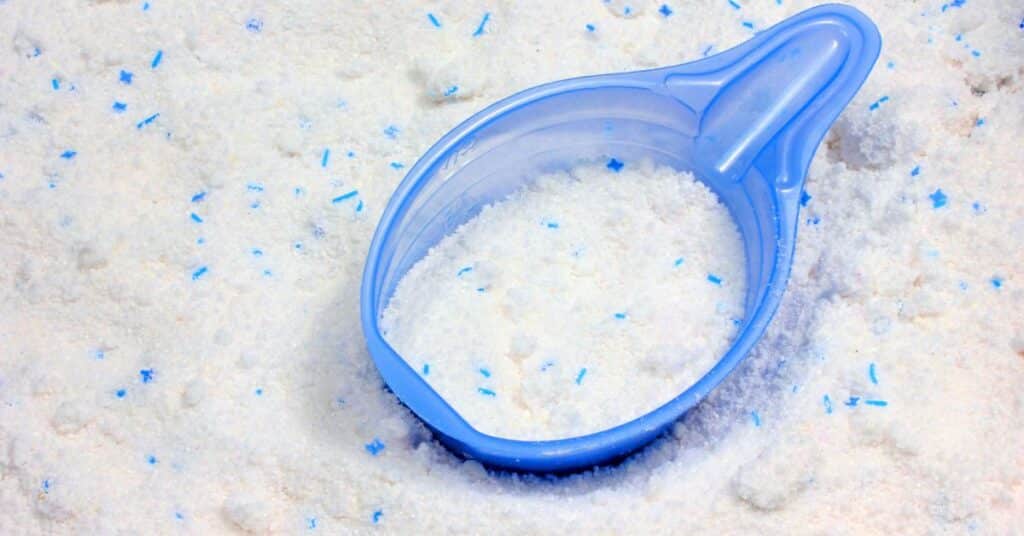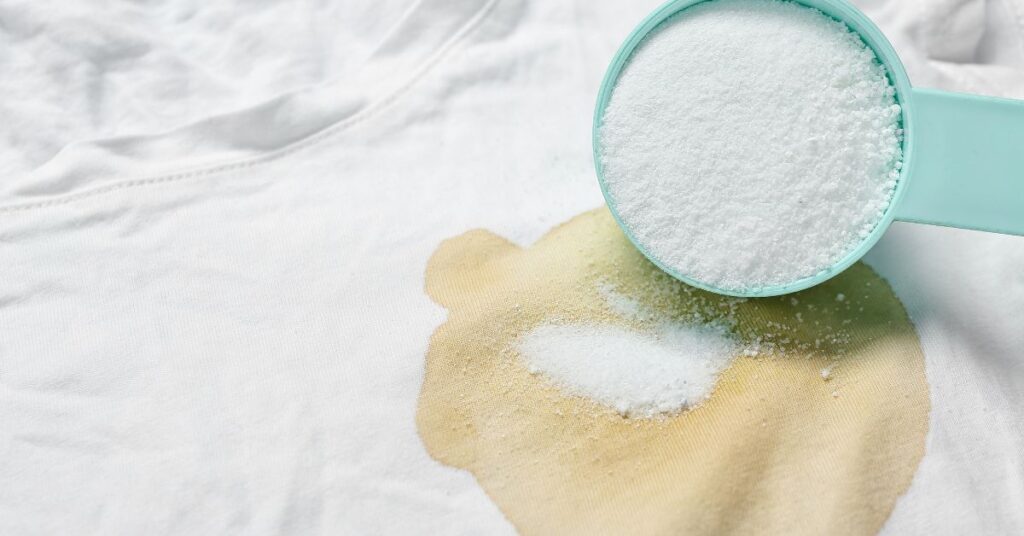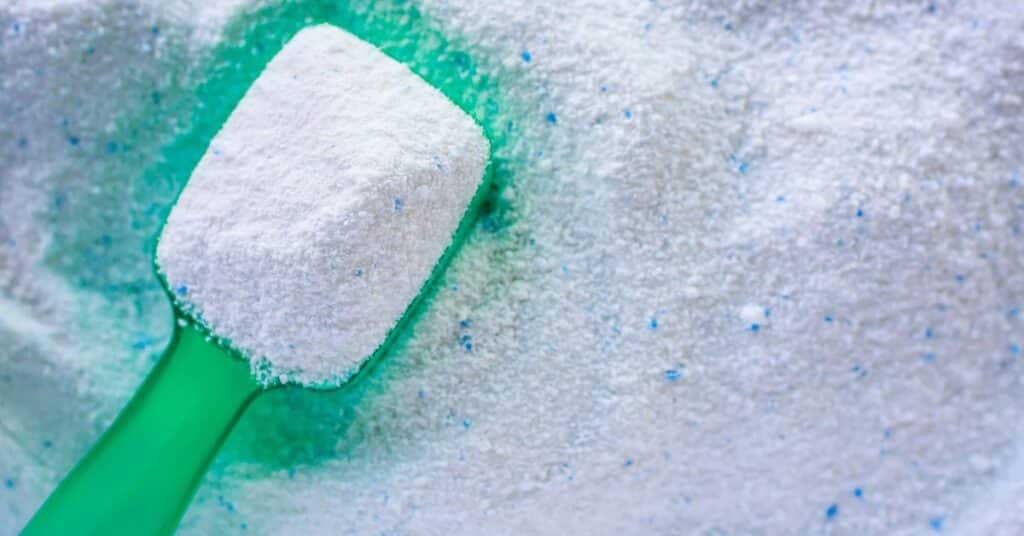Tide powder isn’t just for laundry; it can be a powerful ally in general household cleaning. Its formulation is designed to tackle tough stains on clothes but also works wonders on a variety of surfaces around your home. With its stain-removing enzymes and whitening agents, Tide can help you clean areas you may not have considered before. It’s a versatile cleaning agent that can save you time and effort during your cleaning routine.

When you use Tide powder beyond the laundry room, you’re employing a cost-effective solution for sparkling surfaces. From greasy stovetops to dingy tile grout, its cleaning properties can make short work of what might otherwise seem like daunting tasks. Implementing Tide into your cleaning regimen could enhance the way you maintain the cleanliness of your living space, without necessitating a multitude of specialty products.
Understanding the proper ways to apply Tide powder to various cleaning challenges is key to achieving the best results. Whether it’s diluted in water for mopping floors or used as a soaking solution for grimy kitchen utensils, knowing the correct dilution ratios and application techniques is crucial. This ensures that you’re not only maximizing the effectiveness of the detergent but also taking care of your household surfaces.
The Science of Tide Powder and Stain Removal
When dealing with tough stains, the unique formula of Tide powder is designed to dissolve dirt and grime effectively. Understanding the role of its components, like enzymes and surfactants, and the impact of hot water is crucial for optimal cleaning results.
Understanding Enzymes and Surfactants
Enzymes in Tide powder act as biological catalysts targeting specific stains like proteins and fats. They break down complex stain molecules into smaller, water-soluble fragments that are more easily washed away. Each enzyme type has a particular substance it works best on:
- Proteases: Protein-based stains (e.g., blood, egg)
- Amylases: Starch-based stains (e.g., pasta sauce)
- Lipases: Fat-based stains (e.g., grease, oil)
Surfactants, another key ingredient in Tide powder, reduce the surface tension of water, allowing it to penetrate fabrics more effectively. They surround and lift soil particles from the fabric, holding them in suspension in the water to prevent redeposition, ensuring stains are not left behind after washing.
| Surfactant Action | Description |
|---|---|
| Wetting | They help water to spread and penetrate fabrics. |
| Emulsifying | They aid in breaking up and dispersing grease and dirt. |
| Suspensing | They keep lifted soil from redepositing back onto fabrics. |
| Foaming | They create foam, which helps to lift dirt off surfaces. |
The Role of Hot Water in Enhancing Cleaning Power
Hot water is a significant factor that enhances the effectiveness of Tide powder. It helps to:
- Dissolve the powder faster, ensuring a more even distribution through the wash.
- Activate enzymes at their optimal temperature, maximizing their stain removal properties.
- Loosen and remove oily substances more efficiently, which are more soluble in hot water.
By incorporating hot water into your laundry routine, you’re not only improving the cleaning power of Tide powder but also making the process of stain removal much more efficient.
Practical Cleaning Hacks Using Tide Powder

Tide powder is not only effective for laundry but can also be leveraged as a cleaning agent for various surfaces in your home, offering you a versatile and economical solution.
Revitalizing Laundry with Tide
Dealing with Stubborn Stains:
- Pre-treat: Mix a teaspoon of Tide powder with a little water. Rub the paste onto the stain and let it sit for several minutes before washing.
- Soaking: For tough stains, soak garments in a solution of warm water and half a scoop of Tide. Soak for up to 30 minutes before washing as usual.
Beyond Clothes: Cleaning Various Surfaces
All-Purpose Cleaning Solution:
- Mix half a teaspoon of powdered Tide in a gallon of hot water to create a powerful all-purpose cleaner.
- Apply with a sponge to surface areas such as baseboards, walls, and hard surfaces to cut through grime and eliminate bacteria.
Floor Cleaner:
- Dissolve two teaspoons of Tide powder in a gallon of hot water.
- Use a mop or sponge to clean the floor, effectively removing dirt and light stains.
Carpet Cleaner:
- Sprinkle a small amount of powder on the carpet and gently brush it in.
- Vacuum thoroughly to refresh the carpet and lift light stains.
Dishwasher Detergent Boost:
- Add a quarter teaspoon of Tide powder to your dishwasher detergent to enhance cleaning power and deal with greasy dishes.
Deep Cleaning Strategies for Stubborn Areas
When tackling tough stains and built-up dirt, Tide powder can be your powerful ally. The following methods have been engineered to break down even the most stubborn areas, ensuring a thorough clean.
Tackling Grease and Grime
To combat grease and grime on hard surfaces, like kitchen walls or the shower, create a paste using Tide powder mixed with a small amount of water. Apply the paste with a sponge directly onto greasy surfaces or grimy tiles and let it sit for 10-15 minutes. This allows the detergent to penetrate the stain. Scrub the area in a circular motion and then rinse with warm water. You’ll notice the grease lift away, leaving the surfaces streak-free.
If you’re facing a car wash challenge, mix half a cup of Tide powder in a gallon of warm water. Sponge this solution onto your car’s surface, focusing on sticky residue or dirt patches, then rinse thoroughly. Remember to avoid direct sunlight and wash your car in sections to prevent spotting.
Specialized Techniques for Carpets and Upholstery
For deep cleaning carpets, sprinkle a small amount of Tide powder over the affected area and use a stiff brush to work the powder deep into the fibers. Let it sit for a few minutes to absorb odors and loosen dirt. Vacuum the powder away, ensuring all residue is removed. Your carpets should look revitalized and smell fresh.
When dealing with upholstery, mix Tide powder in a bucket with warm water to create a sudsy solution. Dampen a microfiber cloth in the mixture and gently blot the stained area on the upholstery. Avoid soaking the fabric; a gentle dab should lift the stain. After the treatment, use a clean, damp cloth to remove any soap residue. This process is safe for your delicate upholstery fabrics and effective in removing unsightly spots.
Safety and Maintenance Tips for Prolonged Use

To ensure the effective use of Tide powder while maintaining safety and the longevity of your belongings, it’s crucial to follow these guidelines. Not only will they help preserve the cleaning power of the detergent, but they’ll also prevent damage to surfaces and ensure a safe environment.
Preventing Damage and Ensuring Longevity
- Read Labels Carefully: Always check the care labels on clothing and follow the manufacturer’s instructions to prevent damage. For example, some fabrics may not be compatible with powder detergents.
- Correct Dosage: Use the recommended amount of Tide powder. Overuse can leave residue on clothes and underuse might not clean effectively.
Fabric Type Tide Powder Amount Lightly Soiled 1 scoop Heavily Soiled 1.5 scoops Hard Water Area 2 scoops - Microfiber Cloths: For cleaning surfaces, use microfiber cloths with a solution of Tide powder and water. The cloths are gentle and effective, reducing the risk of scratching or damage.
Creating a Safe Cleaning Environment
- Ventilation: Ensure your space is well-ventilated when using Tide powder to avoid inhaling dust that can be harmful.
- Child and Pet Safety: Keep Tide powder out of reach of children and pets to prevent ingestion, which is dangerous.
- Storage: Store Tide powder in a cool, dry place to preserve its cleaning power and prevent clumping or degradation.
- Mixing with Other Substances:
- Never mix Tide powder with other cleaning agents, especially vinegar or bleach, as this can produce harmful fumes or reduce effectiveness.
- Use Tide powder as intended and do not attempt to mix it into homemade cleaning concoctions.
Frequently Asked Questions
Tide powder is a versatile cleaning agent that can go beyond laundry. Understanding how to use it properly can enhance your cleaning routine.
Can powdered Tide be used as an alternative for traditional cleaning agents?
Yes, powdered Tide can be used as a multi-purpose cleaner. Its composition is effective in lifting grime and cutting through grease, making it suitable for various cleaning tasks.
What precautionary measures should be taken when mixing Tide powder with bleach for cleaning?
When mixing Tide powder with bleach, ensure the room is well-ventilated to avoid inhaling fumes. Always wear gloves to protect your skin and never mix with ammonia-based products.
What is the proper method for cleaning walls using powdered Tide?
To clean walls, mix half a teaspoon of Tide powder with a gallon of warm water. Dip a sponge in the mixture, wring it out, and gently scrub the walls. Finish by wiping the wall with water to remove any residue.
How can powdered Tide be used to clean bathtubs effectively?
Create a paste using Tide powder and a little water. Apply the paste directly to bathtub stains and let it sit for 15 minutes. Scrub with a cleaning brush and rinse thoroughly.
What steps should be followed for cleaning upholstery with powdered Tide?
Mix one teaspoon of Tide powder with two cups of warm water. Apply the solution with a soft-bristled brush to the upholstery, scrubbing gently. Rinse the area with a damp cloth and air dry.
What are Go Clean Co’s recommended uses for Tide powder in bathroom cleaning?
Go Clean Co suggests using a solution of Tide powder and hot water to tackle soap scum and grime in showers and sinks. For best results, apply the solution, let it sit, then scrub and rinse away.
